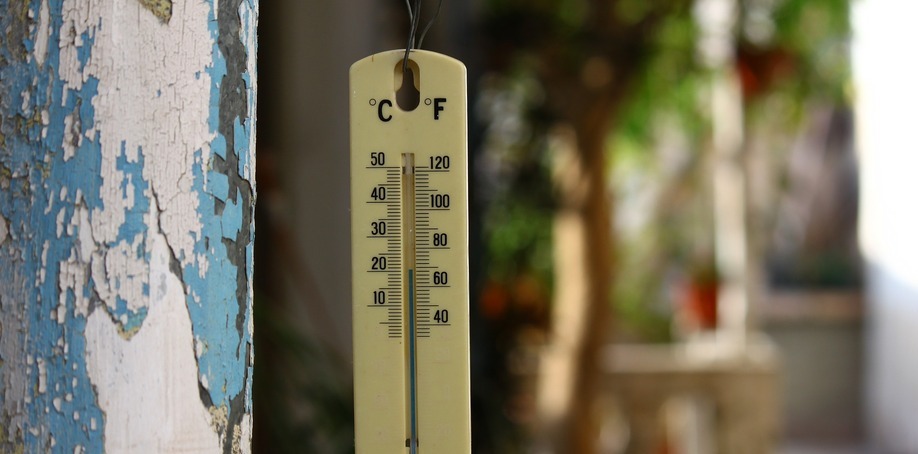Temperatures Effect on Concrete Acid Staining
Temperature and Acid Staining

As each summer and winter season rolls around, we get quite a few questions about the weather and temperature in regards to how it will affect concrete acid staining projects. The questions can really be broken down into three categories: "how does temperature affect concrete drying or setting?", "how does temperature affect concrete staining?", and "how does temperature affect concrete sealing?". So to help out our DIY customers, we wrote this quick guide that should help you understand everything you need to know about the weather and your acid staining projects.
Things To Keep In Mind
When we talk about temperatures, there are two different kinds of temperature in play: the air temperature and the concrete surface temperature. These two temperatures can be different or the same, depending on how long the concrete has been exposed to the air temperature, sun and the ground temperature. Between each of the stages, you will need to ensure that the concrete is dry before moving to the next stage. Along with temperature, a very important thing to consider is the humidity, which will increase the time between the stages. The reason behind this is that most of the factors involving drying involve water, whether it be concrete drying, stain setting or sealer curing. When the humidity is high, then moisture can't evaporate into the air and so it sits longer on the concrete. While it extends the drying time of stains, if too high (above 65%) it can be detrimental to sealing.
Does Temperature Affect Freshly Poured Concrete Drying Times?
To start with, we will discuss the extremes: what temperature is too cold to pour fresh concrete and what temperature is too hot to pour concrete? If the temperature is below freezing, you will not want to attempt to set concrete. This is the temperature that we would consider too cold to pour concrete. A good rule of thumb minimum is 35 degrees F and rising. If the temperature is above 90 degrees Fahrenheit, we would also advise waiting due to the potential of the top layer of concrete drying faster than the lower level, leading to issues with surface cracking.
For the pieces in the middle, the rule is essentially the colder that it is, the longer it will take the concrete to set. As noted by PSU, the drying time will span between 4 hours at 80 degrees Fahrenheit and 14 hours at 40 degrees Fahrenheit.
Does Temperature Affect Concrete Staining?
The temperature needs to be a minimum of 35 degrees F and preferably rising to stain and not going to get below freezing for at least 4 hours, preferably for 12 hours. Concrete stain will dry at a varying rate, but we always advise taking a full 24 hours to allow the stain to fully work. If you are looking to achieve a lighter color stain, you can neutralize and rinse earlier, but the stain has taken full effect after 24 hours. In warmer weather, you will want to try and stain during the cooler part of the day. Early morning is best during hotter weather so the concrete has had all night to release the heat it was holding from the day before, and before it has started warming up for the day. If the stain dries too quickly it will reduce the coverage as you are having to apply more to get full saturation.
Does Temperature Affect Concrete Sealing?
To seal, it has to be 45 degrees F and preferably rising and not going to get below freezing for at least 12 hours and preferably 24 hours. Sealing is especially affected by humidity. The absolute maximum humidity is 70% and falling, though 65% is a better max indicator to use. The ideal humidity range being 50% - 60% or less. Do not apply concrete sealer if there is a chance of rain or fog in the next 24 hours. Concrete sealer only takes an hour or two to dry, if the conditions are correct, so there really isn't a temperature dependent factor in this case when working interior and within the safe humidity margins. However, when working exterior, it is important to again note that in hotter weather you need to apply the sealer in the cooler and/or shaded part of the day. Higher temperatures and sunlight can cause the surface of the sealer to dry too quickly which could trap the moisture in the sealer before it's had time to escape, resulting in cloudiness. So when sealing you need to pay close attention to temperature but especially humidity.
Conclusion
There are a few factors to keep in mind with temperature and weather/humidity, but for the most part, you can do concrete and acid staining projects in almost any weather. As we mentioned before, we compiled this article from common questions that our customers send us. So, feel free to send us in questions about concrete acid staining. We love to talk about this business and help you achieve the perfect DIY project. For more general information, check out our concrete acid staining guide.